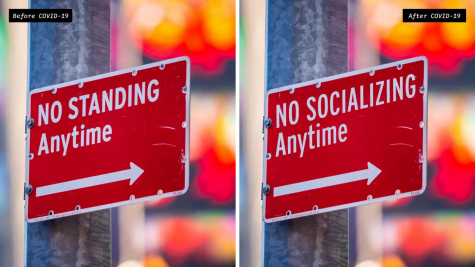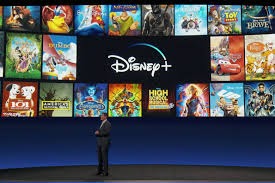The Unintended Effects of Blue Light

January 11, 2021
Blue light. Chances are you’ve heard this term tossed around before in conversation, but what does it mean? What exactly is blue light? Well to be specific, blue light is light, usually emitted by electronic screens, that has a short wavelength, meaning it produces high amounts of energy. But what’s the big deal, right? I look at blue everyday. And you may, but the light that I’m talking about is much more dangerous.
Scientists, in recent years, have begun to take notice of blue light’s harmful effects, and many studies have been conducted to look further into them. “In the past 50 years, there has been a decline in average sleep duration and quality,” states Charles Czerisler, the Frank Baldino, Jr., PhD Professor of Sleep Medicine at Harvard University. Blue light emitted can damage the eye itself. Dr. Ajith Karunarathne of the University of Toledo says, “We are being exposed to blue light continuously, and the eye’s cornea and lens cannot block or reflect it. It’s no secret that blue light harms our vision by damaging the eye’s retina. Photoreceptor cells do not regenerate in the eye. When they’re dead, they’re dead for good.” Blue light can also affect sleep patterns and one’s biochemical circadian oscillator. Anne-Marie Chang, a neuroscientist at Harvard University, composed a study to find more information about the effects of blue light on sleep. Her findings report that “participants reading an LE-eBook took longer to fall asleep and had reduced evening sleepiness, reduced melatonin secretion, later timing of their circadian clock and reduced next-morning alertness than when reading a printed book.” In addition to these studies, many more have been produced and provide similar results of damaged health. The full effects of blue light on the human body have not yet been fully discovered, and it is apparent that people are already suffering. Dora Adamopoulos, OD, explains that extensive use of digital screens can intensely impact an individual’s health. The most common and most noticeable effect is eye strain. Digital eye strain, experienced by a majority of American adults, is characterized as “temporary physical discomfort felt after two or more hours in front of a digital screen and is associated with the close to mid-range distance of digital screens” (Smith). Dr. Adamopoulos explains “on average, we look at our mobile phones more than 100 times a day, yet people aren’t making the connection how this constant use of technology is impacting vision health.”
Atop blue light damage, extreme computer usage can severely affect and damage one’s being. Online reading can adversely affect one’s attentiveness, circadian clock, and retentiveness, among others. Anne Mangen of Norway’s Stavanger University ran multiple studies comparing paper books and e-readers. Her experiment was simple: have two equal sized sample groups read a short story and complete a reading comprehension quiz afterwards. Mangen’s results showed the group using the e-readers performed significantly worse on the plot portion of the quiz. This portion was specifically designed to test memory and retention of the material. Mangen states that “empirical evidence indicat[ing] that affordances of screen devices might negatively impact cognitive and emotional aspects of reading.”
The over exposure to screens has been a talked about issue in America for decades, but not until now have we understood why. Studies have shown that those who are exposed to this light for “more than five hours per day are at great risk of digital eye strain.” Now, more than ever, safety protocols regarding blue light must take effect. Too many students and employees are over exposed to this dangerous, high-energy light, and too many are facing the painful consequences.








